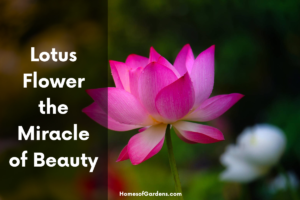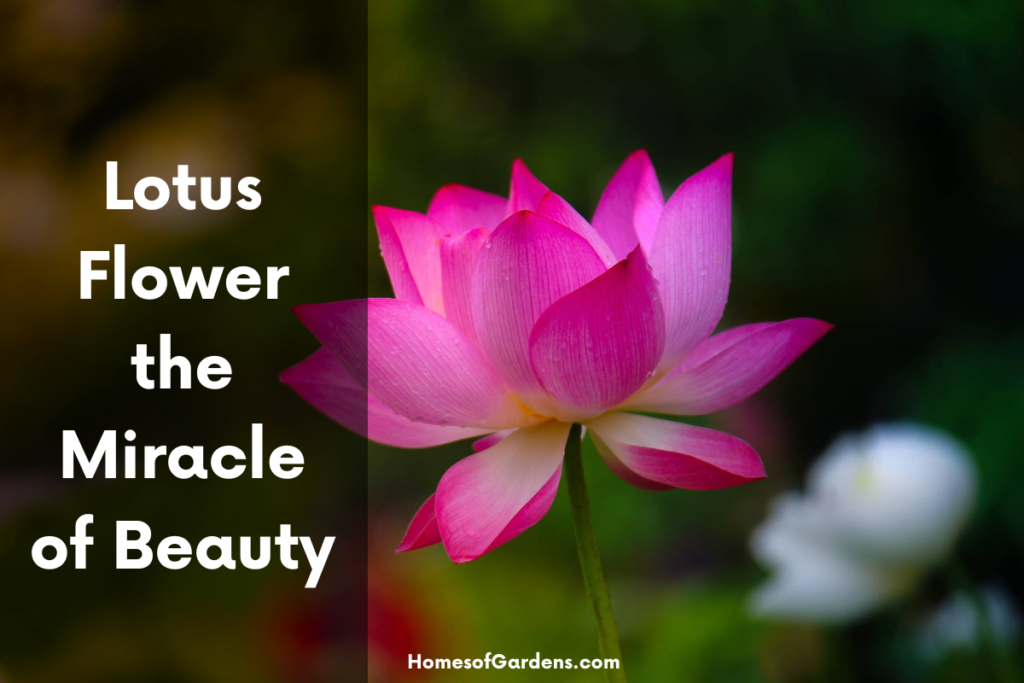Lotus Flower is a stunning flower with beautiful flowers that gently emerge from deep, dark waters. It has always been a symbol of the purity of nature and awakening across many world cultures. Lotus Flower is an extraordinary aquatic plant, scientifically called Nelumbo nucifera. It is able to thrive in difficult conditions, turning waters that are muddy into breathtaking displays that are amazing in their natural environment. For both gardeners as well as spiritual seekers growing lotus can provide the pleasure of aesthetics and a powerful connection to nature’s wisdom.
Cultural Significance and Symbolism of Lotus Flower
In all time the lotus has always held significant spiritual significance in a variety of religions. In Buddhist doctrines, the lotus is a symbol of the quest for the light, rising free of dark waters, similar to how humans escape the suffering of our world. Hindu iconography often depicts gods sitting on thrones of lotus which symbolize the divine purity that emerges from the world of matter. The ancient Egyptians believed in the lotus’s blue color as a sacred plant that symbolizes rebirth and the daily renewal of the sun.
This powerful symbolism continues to remain in the present which makes lotus flower the most popular choice to decorate meditation and holy areas. The plant’s rhythmic daily cycle of closing at night and returning to the sun in the morning adds to its magical connections to the cycle of the world. Modern gardeners tend to use lotus plants not just to impress the eye however, but for the sensation of peace and contemplation they bring.
Varieties for Different Garden Settings
Gardeners can select from a variety of lotus varieties that will suit their unique needs and conditions. The most well-known Sacred lotus flower produces large, beautiful blooms that are fragrant with shades of white and pink and some varieties reaching massive diameters of 12 inches. These magnificent flowers thrive in large lakes where their large leaves can sprawl over the surface of the water.
For smaller containers or water features The dwarf varieties provide beautiful blooms on a manageable scale. The cultivar called ‘Momo is a good example, producing beautiful pink flowers and has the compact growth habits that are ideal for containers on patios. American lotus flower (Nelumbo lutea) is a cheerful yellow blooms, is robust in cooler climates, opening up new options for northern gardeners.
The Art of Lotus Flower Cultivation
A successful lotus-based cultivation process begins by knowing the plant’s habitat. The aquatic perennials thrive in warm, shallow water with plenty of sunshine. Gardeners must select a location that gets at least an hour of sun each day, as lack of light can hinder the flowering process. The process of planting involves placing the tuber into clay-rich soil inside an open, shallow container which can be submerged into water.
Once the plant is established it is a fascinating pattern of growth that makes lotus flower cultivation so satisfying. The initial leaves rest on the water’s surface and later, they appear above it on strong stems. This is a sign of maturation, and also signals the imminent arrival of the first spectacular flowers. Regular fertilization of the plant with food from the water will encourage growth and vigorous growth. The occasional trimming of leaves that have turned yellow ensures that the plant is healthy.
Overcoming Common Challenges
While they are generally resilient lotus flowering plants are usually hardy, they may pose some challenges that require careful care. The growth of algae is a common problem in lotus ponds and competes with plants for sunlight and nutrients. Planting companion species strategically such as water lilies could aid in shading the water and impede algae growth. Pest control usually is the process of dealing with aphids as well as caterpillars. They are controlled by gentle spraying or natural treatments which help maintain the pond’s eco balance.
Winter care is different based on conditions, with gardeners in cooler regions needing to shield their plants from the freezing temperatures. Alternatives include moving containers-grown plants to a deeper water source or bringing overwintering tubers inside. These considerations for the season ensure that the plants will be able to return with renewed energy every spring, continuing their cycle of bloom and growth.
Creative Garden Applications of Lotus Flower
Beyond the traditional pond setting lotus flowers are a great addition to creative garden designs. Container water gardens enable even those with a small space to appreciate these stunning flowers. Large ceramic containers or half barrels filled with dwarf lotus varieties provide a striking feature for patios and smaller courtyards. The inclusion of fish in small quantities transforms these vessels into self-contained ecosystems that captivate viewers of all age groups.
If you’re looking to incorporate lotus symbols into their landscaping, making a dedicated area of meditation around the plants could be incredibly satisfying. A combination of lotus flowers as well as smooth stones, and maybe a tiny water feature creates an atmosphere of peace. Many gardeners harvest the delicate, but short-lived flowers for arrangements of flowers, bringing some aquatic beauty inside.
The Rewards of Lotus Flower Gardening
The cultivation of lotus flowers provides more than just a sense of horticultural pleasure. The constant watching of these plants – beginning with the first emergence of leaves to the stunning opening of each bloom – is an experience in patience as well as the beauty of nature’s processes. Many gardeners feel that the practice of caring for their lotus plants can be a way of meditating that connects them to the ages of ritual and symbolic meaning.
They can be grown to celebrate their cultural significance and their incredible visual impact or simple pleasure of nurturing life, lotus flowers are one of the most profound gardening experiences. Their capacity to transform mundane water features into breathtaking displays of nature’s artistic talent make them a must-have addition to any garden looking for beauty and significance.
If you’re looking to start your lotus-growing journey, beginning with a tiny plant in a container is an easy entry point into this enjoyable exercise. As confidence increases, so does the size of one’s lotus garden, which could expand to include a variety of varieties as well as more elaborate water features. It is the lotus that reminds us that even from humble beginnings in muddy water incredible beauty can emerge, an experience that is as important for gardening as life in general.

